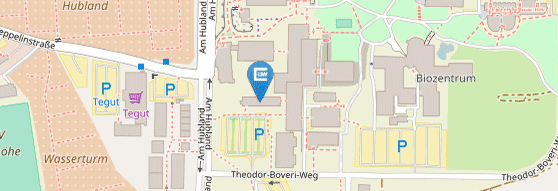Project 3
Project leader:
Tobias Brixner
Julius-Maximilians-Universität Würzburg
Institute of Physical and Theoretical Chemistry
Am Hubland, D-97074 Würzburg
Phone: +49 931 31-86330
E-Mail: brixner@phys-chemie.uni-wuerzburg.de
URL: https://www.chemie.uni-wuerzburg.de/ptc/arbeitsgruppen/lehrstuhl-i-prof-t-brixner/
Coherent two-dimensional (2D) and higher-dimensional spectroscopy of electronic excitations provides detailed information on the time-dependent dynamics of complex systems. Making use of the analysis of nonlinear signals with respect to multiple frequency axes it is possible to separate contributions that overlap in one-dimensional spectra. We have the following objectives: The technique of 2D spectroscopy shall be further developed to implement fast shot-to-shot data acquisition under the magic angle (i.e., avoiding anisotropy contributions). With that we will investigate the excitonic dynamics in molecular aggregates. In a perylene-based J-aggregate (cooperation with Prof. Würthner), H-bonds lead to a unique arrangement of the chromophores in a "cable-like" double-strand structure that can be varied systematically by changing the substituents. We want to determine the excitonic signatures as a function of structure via 2D spectroscopy as well as power-dependent measurements. The fast 2D data acquisition should further allow us to follow the time-dependent evolution of excitonic couplings during the kinetic process of selfaggregation. In another project part (cooperation with Prof. Lambert) we want to investigate the origin of long-lived coherences that are discussed controversially in the literature on 2D spectroscopy. Squarain oligomers are suited as model systems because there the most intense absorption of the one chromophore overlaps spectrally with the vibrational shoulder of the other chromophore. Besides linear oligomers we will also address ring- and star-shaped structures because the selection rules for optical transitions change with the different symmetries, in turn modifying the channels accessible for excitonic energy transfer. In yet another part of the project we will develop a technique that is new in the literature and that we call "2D micro-spectroscopy" allowing additional spatial resolution in a confocal microscope. Thus we shall investigate microcrystalline molecular aggregates on surfaces that exhibit locally varying excitonic properties (cooperation with Prof. Pflaum). The last project part centers on theoretical analysis. Besides cooperations with the theory groups (Prof. Engel, Prof. Engels, Prof. Mitric) we want to develop a new procedure for extracting population transfer rates from 2D spectra. In the literature one models elaborately, for this purpose, the molecular system, simulates the dynamics, from that calculates the nonlinear response and the observable signal, compares the result with experiment, and finally improves the model assumptions iteratively. Instead, we strive for a direct "inversion" of the experimental raw data. We want to adapt for 2D spectroscopy the principle of "target analysis" known from transient absorption and combine it with a systematic "Aufbau principle".

